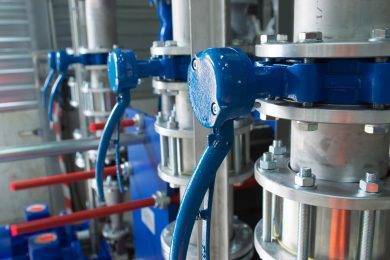Hardness is one of several important criteria to consider when designing industrial valves. With most materials, especially metals, hardness testing is valuable and revealing. For more than 250 years, this mechanical test has been used often.
When designing a valve system, you’d usually requisition a hardness test along with other assessments. The importance of hardness testing cannot be understated, especially when it comes to testing valves.
Keep reading to learn more about why hardness testing for valves is important.
What Is Hardness Testing?
Before discussing different types of valves, let’s touch on hardness testing.
Hardness tells you how much a material can resist deformation. It also assesses how good a material is at resisting dents and scratches. The process enables engineers to learn the hardness or softness of materials.
There are three categories of material hardness tests. These categories include:
1. Scratch harness
2. Press in hardness
3. Rebound hardness
Usually, engineers will use the Rebound hardness test for metals.
During a Rebound hardness test, an engineer might drop a small hammer from a certain height to impact a sample metal. They’ll then measure the energy stored. The measurement will come in the form of how high the hammer rebounds during the test.
Why Hardness Testing Is Important
Hardness testing provides important information. As a result, it’s used in several fields and industries, including:
• Aerospace
• Automotive
• Failure analysis
• Quality control
• Structural engineering
Hardness testing is also used considerably in manufacturing.
Researchers also use hardness testing for a wide range of components. These components may include everything from raw materials to finished goods to prepared specimens.
The tests help researchers determine material properties. They provide them with the capabilities, durability, flexibility, and strength of materials.
Most importantly, the tests can help you to determine the best valve for your needs.
Types of Valves
When it comes to designing valves, you’ll begin by considering the valve type. Typically, you’d choose from four valve styles. These styles include:
1. Full port ball valves
2. Reduced port ball valves
3. Standard port ball valves
4. V port ball valves
Companies usually use these kinds of valves to control the flow of liquids and gas. However, not every ball valve works well for every application. For instance, it’s critical to design a valve with enough hardness for its intended application.
Testing Valve Hardness
That’s where testing comes into play. You must test valve hardness to ensure that it’s safe for its intended use.
There are different kinds of hardness testing types and systems. The right test will help you learn the optimal solution for your application.
Over time, hardness testing has evolved. Now, engineers have access to sophisticated instruments and processes that enables them to test materials accurately.
For example, engineers will often use the Rockwell hardness test to evaluate materials. Less frequently, they might use the Brinell or Vickers hardness tests. In either case, this kind of testing is critical for making valve modifications that ensure your design will function as desired.
Operate Your Business Responsibly!
Hardness testing plays a critical role in material testing, component approval, and quality control. This kind of testing is essential for verifying that a valve design can handle various temperatures and forces.
For instance, you want to ensure that a pressure reducing valve can withstand anything that you might throw at it. With hardness testing, you can determine if your design is suitable for its intended use.
Today, it’s important to source capable equipment for your company. However, it’s also important to do so sustainably.
Please feel free to browse our News & Resources section to learn more about sustainable business practices.











